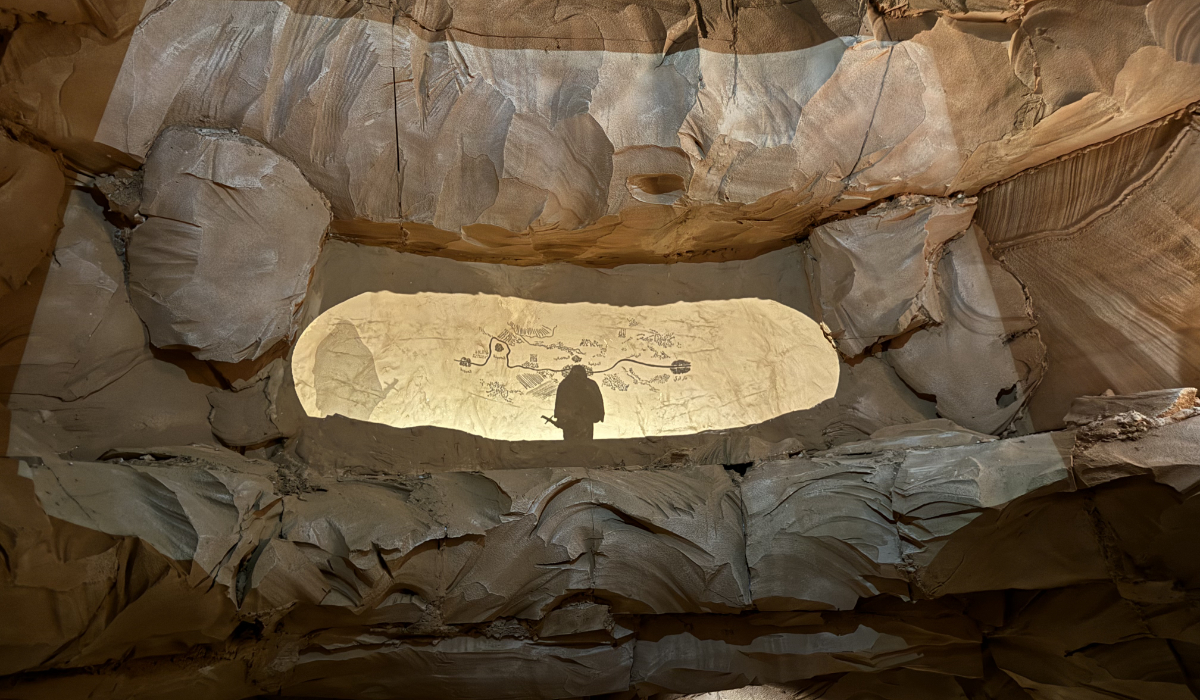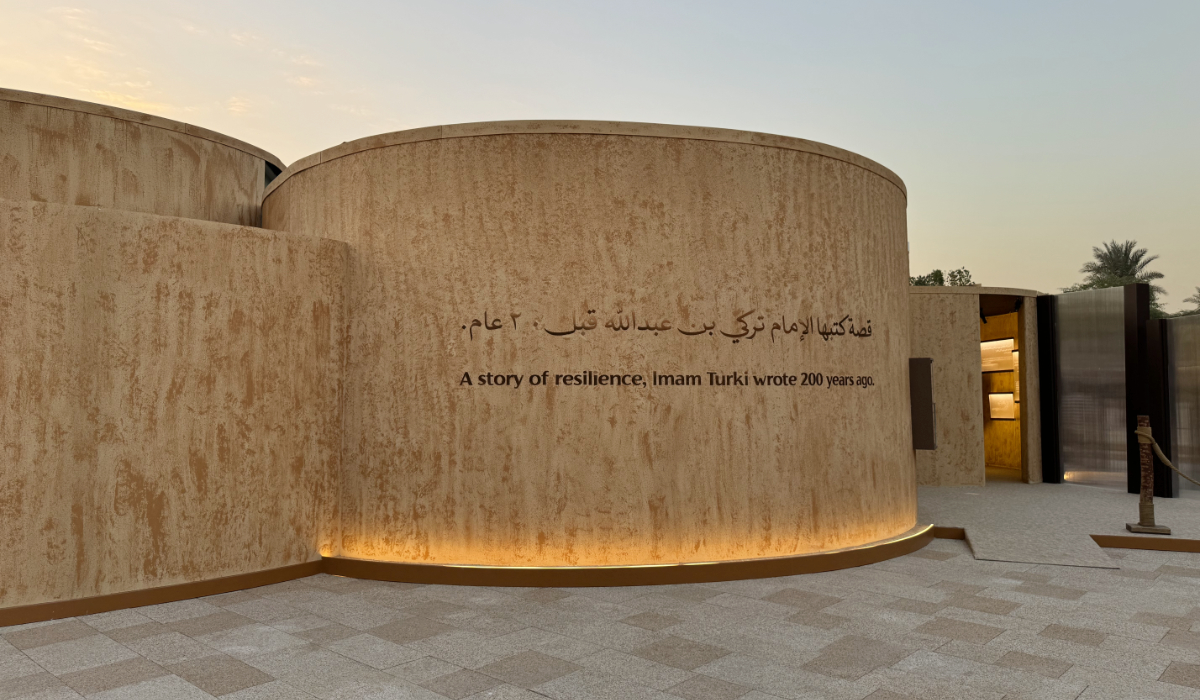LONDON: It takes courage and vision to make contemporary additions to precious heritage buildings in a bid to grant them a new lease of life, but the results are almost always successful and dramatic.
London, for example, has the Great Court of the British Museum, the striking turn-of-the-millennium transformation of the 19th-century building by renowned architect Sir Norman Foster, which when completed in 1999 created a breathtaking enclosed space uniting the two wings of the building under a gigantic roof of glass and steel.
In Paris, architect Ieoh Ming Pei’s imposing glass pyramid in the main courtyard of the Louvre was described as “sacrilegious” when the design, sheltering a vast new underground entrance lobby, was proposed in 1984 as a solution to the museum’s inability to handle the ever-increasing number of visitors drawn to the city’s number-one attraction.
Initially, as The New York Times reported in 1985, the design was described variously as “an architectural joke,” “an eyesore,” “an anachronistic intrusion of Egyptian death symbolism in the middle of Paris” and “a megalomaniacal folly.”
Today, however, the Louvre would not be the Louvre without its pyramid, and its attendant three smaller siblings, beloved of Parisians and photographed by tourists almost as much as the museum’s star attraction, Leonardo da Vinci’s Mona Lisa.
Less well known globally, but equally striking, is the ancient-and-modern blend that is Moritzburg Castle in Halle, near Leipzig, Germany. In 2008 the crumbling remnants of the 15th-century building, in neglected near-ruin for centuries, were not restored, but recruited as component parts of the thoroughly contemporary modern art museum that appeared to grow up organically out of the remains.
“By this means,” as the Kulturstiftung Sachsen-Anhalt cultural foundation said, “the palace and its colorful history have successfully been artistically brought into the present . . . Moritzburg Castle’s present architectural appearance thus also stands for the museum’s new beginnings at the start of the 21st century.”
Now the same might be said of a bold new plan to build a luxury boutique hotel within the precincts of the Saudi UNESCO World Heritage site of Hegra at AlUla.
The Chedi Hegra, due to open by the end of this year, is being constructed not as a standalone addition to one of the most dramatic landscapes Saudi Arabia has to offer, but by making imaginative use of a number of old buildings, including two outstanding pieces of architecture steeped in history — the Madaen Saleh railway station, a stop on the historic Hejaz railway that ran from Damascus to Madinah, and the adjacent Ottoman fort, one of a series built in the 18th century to protect pilgrims traveling to Makkah.
The history of this region is as rich as it is long. The Hegra archaeological area, which in 2008 became the first property in Saudi Arabia to be inscribed on UNESCO’s World Heritage List, is the largest conserved site of the Nabataean civilization south of Petra in Jordan.
At its heart is a stunning necropolis of 111 monumental tombs, most with decorated facades, carved out of the surrounding sandstone rocks between the 1st century BCE and the 1st century AD.
Earlier civilizations left their mark here too. Located in a valley settled from remote antiquity thanks to the presence of ample subterranean water, in this location before the rise of the Nabataeans ruled the sheikdom of Dadan, and then the Kingdom of Lihyan, both of which left traces of their passing in the rocks and the sand.
Ancient Hegra, as the UNESCO nomination document attests, was “at the crossroad of international trade and of different cultures and civilizations, and played a key role in the exchange of goods and cultural traditions between Arabia and the Mediterranean world, becoming a wealthy and important halt for the caravans crossing the Arabian Peninsula carrying incense and spices from Yemen and India.”
And more recent history, no less fascinating, can be found within the UNESCO site, including the path of one of the three great Hajj pilgrimage routes, all of which are on Saudi Arabia’s UNESCO Tentative List as potential future World Heritage Sites.
Alongside the Darb Zubaydah, which linked the Iraqi city of Kufa to Makkah, and the Egyptian Hajj road, from Haqel on the Gulf of Aqaba, runs the Syrian Hajj road from Damascus, which passed through AlUla on its way south to Makkah.
In addition to its Islamic heritage, this is a road that was traveled for centuries by traders and Bedouin, many of whom left their marks in ancient rock carvings along the route.
The square, thick-walled Hegra fortress, which dates from 1744 to 1757 and has an ancient well in its courtyard, was one of the many forts built to protect the pilgrims’ routes to Makkah.
It was partially renovated in 1985, and not for the first time — it is thought that it was previously restored in the late Ottoman period, probably when the railway station was built, in about 1906.
The historic Hejaz railway, which ran 1,300 km from Damascus to Madinah, was built by the Ottoman Empire before World War I and followed the course of the old Syrian pilgrimage caravan route.
The 700 km section of the railway that ran through what is now Saudi Arabia is also on UNESCO’s Tentative List as a potential World Heritage site of universal importance.
One of the great engineering achievements of its day — and all the more significant historically because its construction was funded by donations from Islamic communities around the world — the railway reduced the journey time for pilgrims to Makkah from about six weeks to just a few days.
The railway was also used to carry Ottoman forces south to maintain Turkish control over the Hejaz, but after being repeatedly attacked and disabled during World War I by T.E. Lawrence (“of Arabia”) and the forces of the Arab Revolt, it fell into disuse, never to be restored.
Today, traces of the railway can still be seen all along its route — tracks, half-buried in sand, toppled engines lying where they fell after being blown up by mines more than a century ago, and more than 2,000 bridges and other structures along its total length.
Now, both the railway station and the Ottoman fort are to find a new lease of life as component parts of the new hotel, as part of the broader determination in a Saudi Arabia focused on diversifying away from dependence on fossil fuels to attract visitors by making the most of its many heritage assets.
This is, of course, not the first time that ancient and modern have been brought together as Saudi Arabia pursues its ambitious plans to develop the country’s potential as a hub for cultural tourism.
Until now, perhaps the most striking example of this determination not to treat heritage assets as museum pieces, frozen in time, but to breathe new life into them as key attractions is the preservation of Diriyah, birthplace of the Kingdom, as the jewel at the heart of the architecturally sympatico Diriyah Gate development just west of Riyadh.
But the plan for Hegra, executed audaciously and confidently within the bounds of a World Heritage site, sets a new standard for bold reimagination of heritage assets.
And this is about far more than merely the creation of yet another luxury hotel. The Chedi Hegra, the first hotel planned for the World Heritage site, is part of the wider mission of the Royal Commission for AlUla, working with local and international experts in archaeology, heritage conservation and preservation, architecture and master planning “to deliver an environmentally and historically sensitive transformation of AlUla.”
RCU is building the hotel directly into several existing structures, including the railway station and Hegra Fort, with existing structural and exterior walls, some of which are of historic mud-brick construction, being preserved and integrated with the modern architecture.
The vast majority of the UNESCO World Heritage site, says RCU, “will remain untouched by construction and carefully preserved by RCU to maintain the integrity of Hegra’s incredible human and natural heritage.”
The Chedi Hegra, says John Northen, the RCU’s vice president of hotels and resorts, “embodies the fulfilment of our Journey Through Time master plan, with its deep respect for heritage, sustainable design features, and an authentic luxury experience that celebrates what makes AlUla a special destination for travelers seeking both comfort and adventure.”
Equally important, with the relatively modest but pioneering Chedi Hegra — the construction of which will use local materials, businesses and labor, and when up and running is expected to create at least 120 jobs — the RCU is demonstrating its determination to work hand in hand with the local community and to “invest in education and learning for AlUla’s next generation and create training and employment opportunities for its people.”
In AlUla, thanks to a bold and imaginative blending of the old and the new, Saudi Arabia is demonstrating how its past can play an increasingly important role in its future.

































